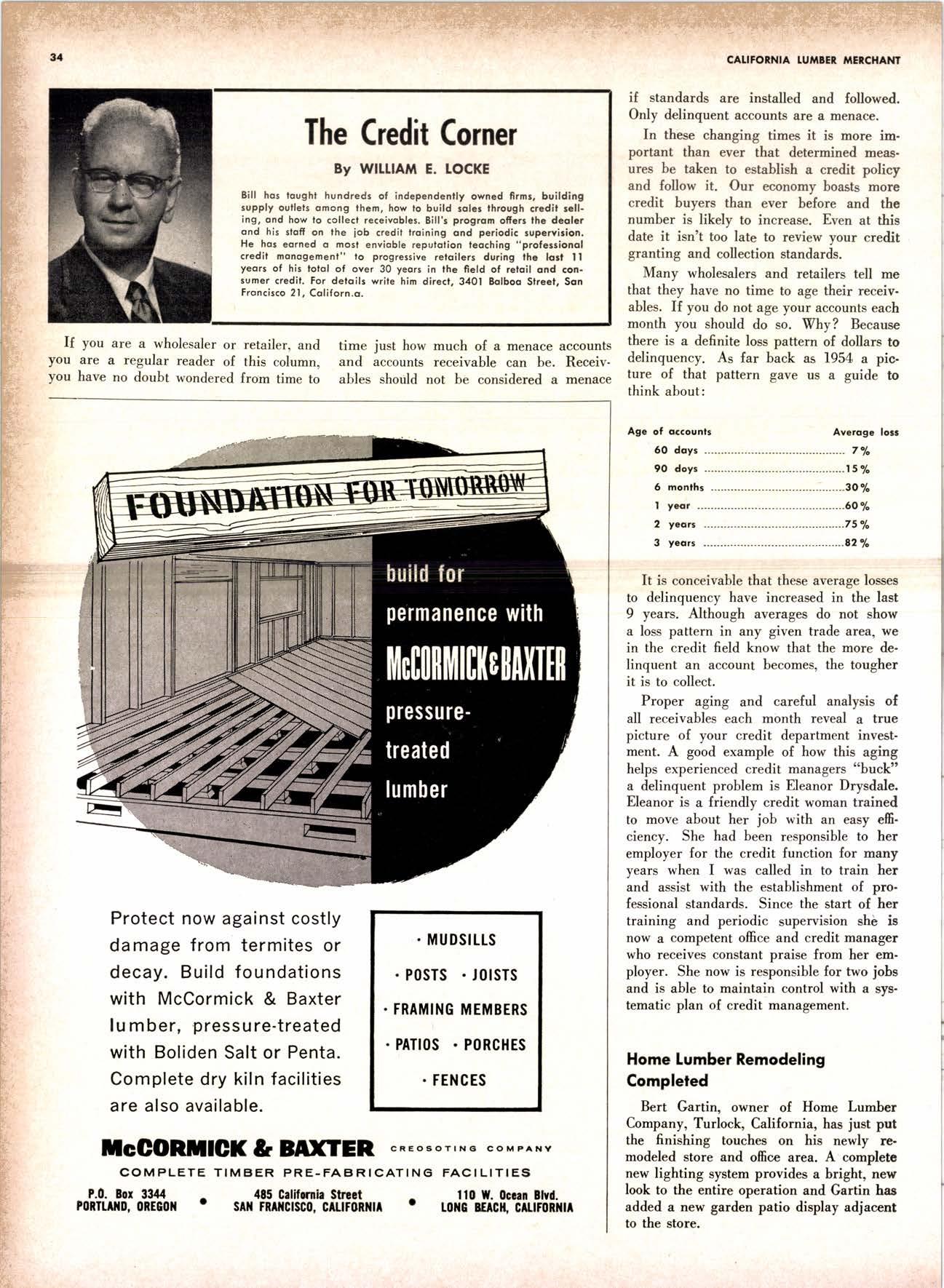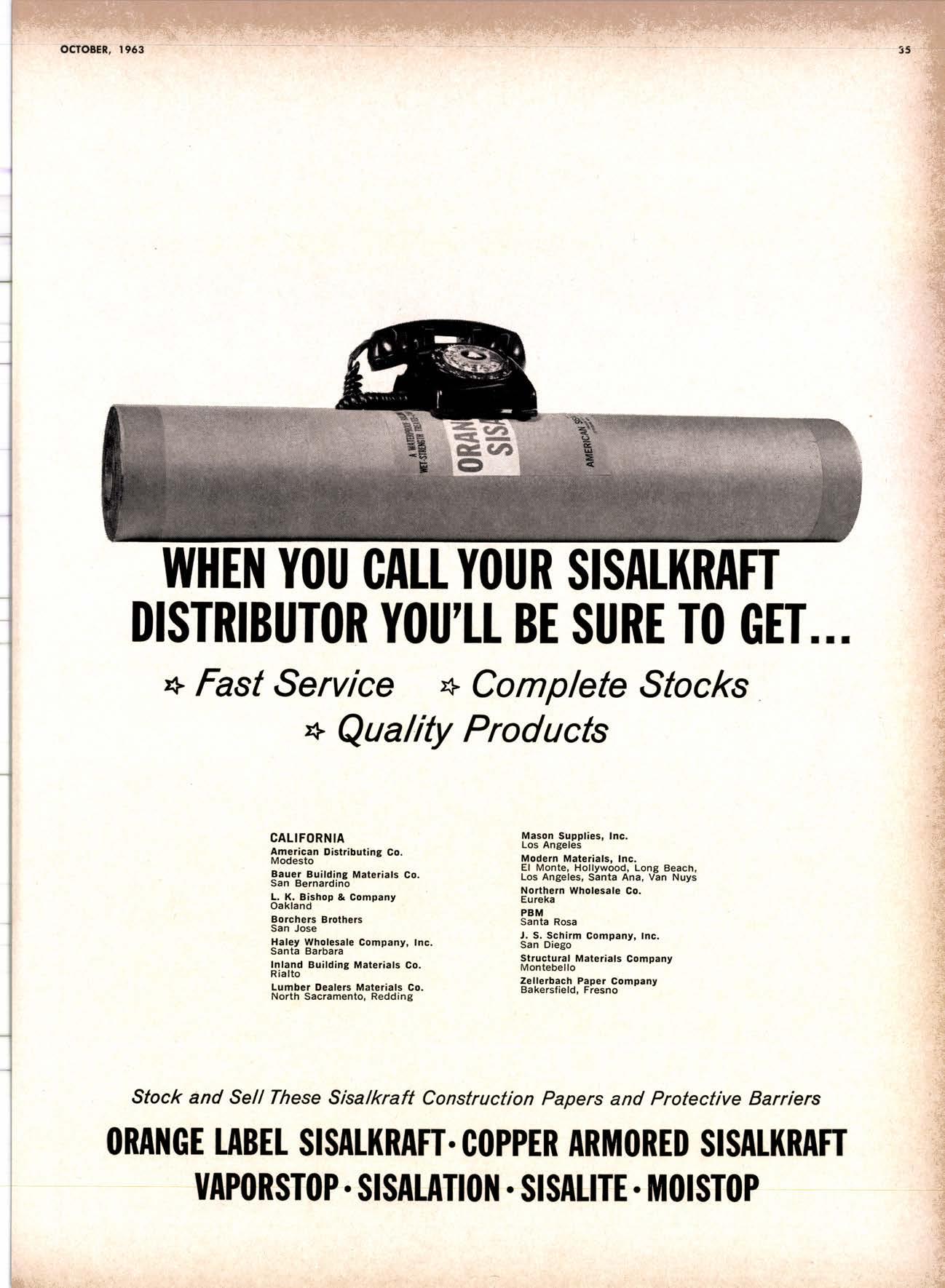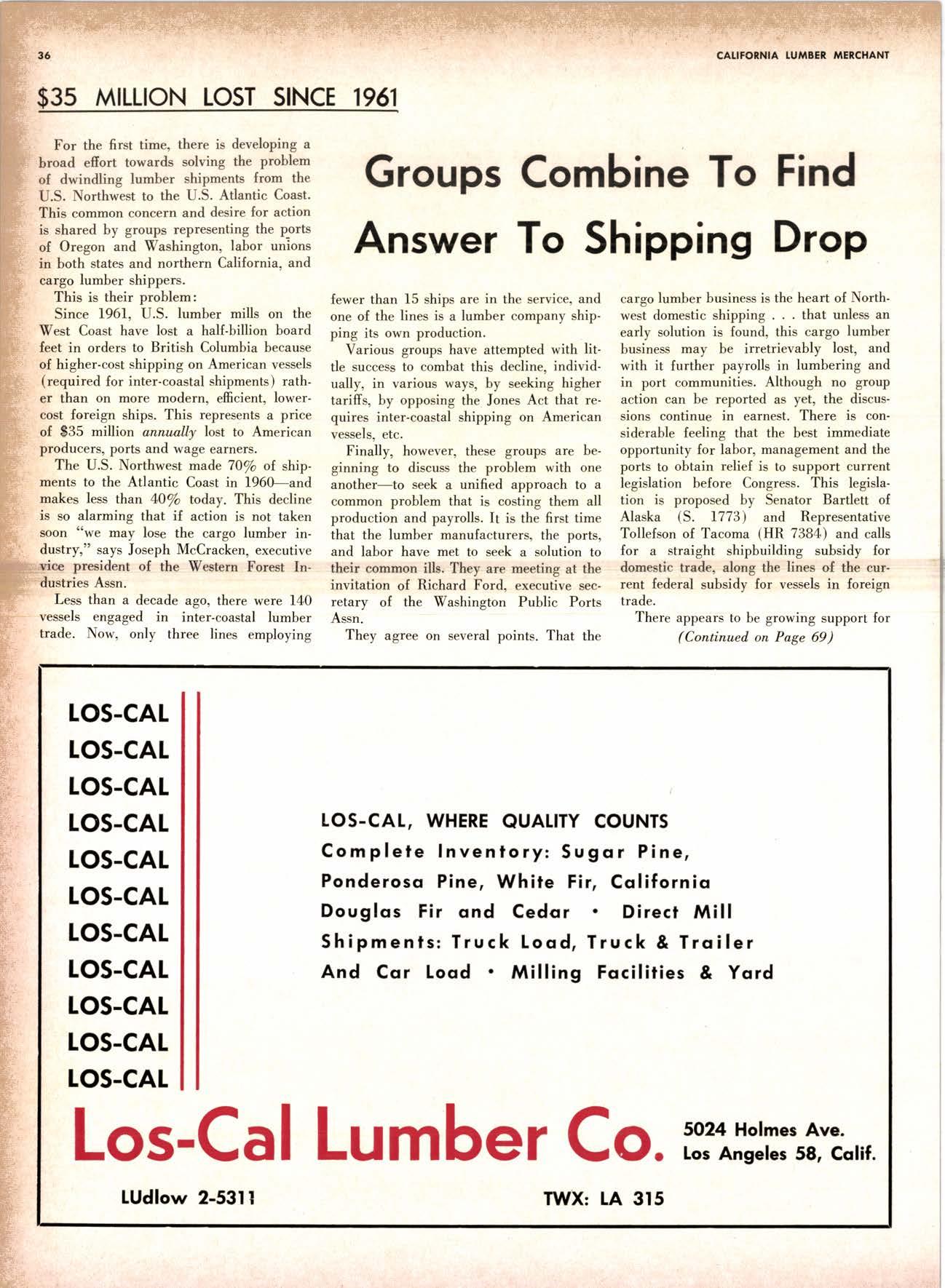
2 minute read
The Credit Corner
By WlttlAM E. TOCKE
Bill hos lought hundreds of independently owned firms, building supply oullets omong them, how to build solcs lhrough credit selling, ond how lo collecl receivobles, Eill's progron offers lhe deoler ond his sloff on the iob credit lroining ond periodic supervision. He hos eorned o mosl envioble repufotion teoching "professionol credil monogement" lo progressive reloilers during lhe lost ll yeors of his lotol of over 30 yeors in the field of retoil ond consumer credif. For detoils write him direct, 3401 Bolboo Slreet, Son Froncisco 21, Coliforn.o.
if standards are installed and followed. Only delinquent accounts are a menace.
In these changing times it is more important than ever that determined measures be taken to establish a credit policy and follow it. Our economy boasts more credit buyers than ever before and the number is likely to increase. Even at this date it isn't too late to review your credit granting and collection standards.
Many wholesalers and retailers tell me that they have no time to age their receivables. If you do not age your accounts each month you should do so. Why? Because there is a definite loss pattern of dollars to delinquency. As far back as 1954 a picture of that pattern gave us a guide to think about:
Age of occounls Averoge loss
50 doys -.---.-----..------ 7%
9O doys .---...----.......15%
5 months -......---..----3O%
I yeor -.--.-...-. ...--....60%
2 years .---..-...-...-....75%
3 yeors ...................82%
It is conceivable that these average losses to delinguency have increased in the Iast 9 years. Although averages do not show a loss pattern in any given trade area, we in the credit field know that the more delinquent an account becomes, the tougher it is to collect.
MUDStttS
P0sTs JorsTs
FRAMING MEMBERS
PATIOS . PORCHES FENCES
Proper aging and careful analysis of all receivables each month reveal a true picture of your credit department investment. A good example of how this aging helps experienced credit managers "buck" a delinquent problem is Eleanor Drysdale. Eleanor is a friendly credit woman trained to move about her job with an easy emciency. She had been responsible to her employer for the credit function for many years when I was called in to train her and assist with the establishment of professional standards. Since the start of her training and periodic supervision she is now a competent office and credit manager who receives constant praise from her employer. She now is responsible for two jobs and is able to maintain control with a systematic plan of credit management.
Home Lumber Remodeling Completed
Bert Gartin, owner of Home Lumber Company, Turlock, California, has just put the finishing touches on his newly remodeled store and office area. A complete new lighting system provides a bright, new look to the entire operation and Gartin has added a new garden patio display adjacent to the store.

Million Lost Since 1961
For the first time, there is developing a broad efiort towards solving the problem of dwindling lumber shipments from the U.S. Northwest to the U.S. Atlantic Coast. This common concern and desire for action is shared by groups representing the p-orts of Oregon and Washington, labor unions in both states and northern California, and cargo lumber shippers.
This is their problem:
Since 1961, U.S. lumber mills on the West Coast have lost a half-billion board feet in orders to British Columbia because of higher-cost shipping on American vessels (required for inter-coastal shipments) rather than on more modern, efficient, lowercost foreign ships. This represents a price of $35 million annually lost to American producers, ports and wage earners,
The U.S. Northwest made 70/o of shipments to the Atlantic Coast in 1960--and makes less than 40/o today. This decline is so alarming that if action is not taken soon "we may lose the cargo lumber industryr" says Joseph McCracken, executive president of the Western Forest Inies Assn.

Less than a decade ago, there were 140 vessels engaged in inter-coastal lumber trade. Now, only three lines employing

